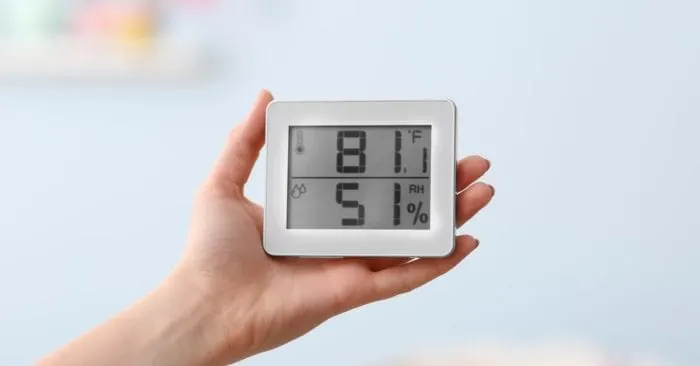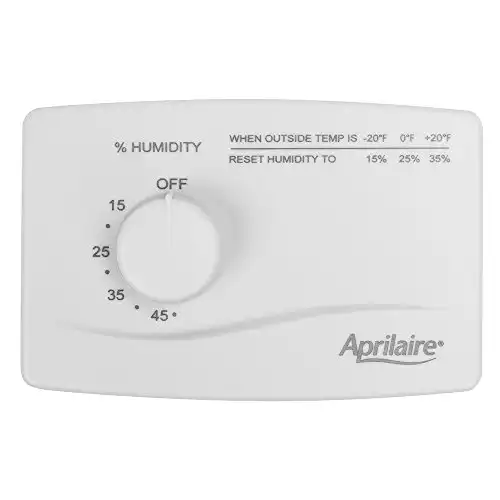A humidistat helps regulate the amount of moisture in your home.
While this may seem trivial, it’s actually very important for maintaining air quality. Read on to learn why.
What is a Humidistat?
A humidistat measures and helps manage the amount of moisture in the air in your home. Humidistats work like thermostats to keep the temperature within an ideal range.
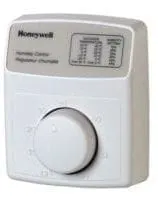
Source: Homedepot.com
Humidifiers and dehumidifiers often have built-in humidistats. The humidistat checks the level of moisture in the air. It turns the humidifier or dehumidifier on and off to maintain the desired level of humidity.
Central heating, ventilation, and air conditioning (HVAC) systems may also have humidistats built in. Sometimes these are added to existing HVAC systems as well.
When connected to an HVAC system, the humidistat may turn the air conditioner or heat on or off to manage the humidity. Or it may be connected to a vaporizing system to add humidity. Either way, the goal is to control humidity and keep it at or near the desirable point.
How Humidistats Work
A humidistat is an electronic device that has a sensing element made up of a flat plate with two metal conductors. The conductors detect the level of atmospheric humidity through changes in electrical resistance that occur with changes in humidity.
The reading from the sensing element goes to a relay amplifier. If the reading is under or over the setting on the humidistat, the relay turns the humidifier or dehumidifier on to change the humidity level.
A hygrometer is a stand-alone device that also reads the humidity. However, it is not connected to a humidifier, dehumidifier, or central HVAC. It is like a thermometer rather than a thermostat.
A hygrometer is a small device that may be hand-held or rest on a shelf. It usually runs off batteries. It’s used for monitoring only. However, it can be a helpful addition when used along with a humidistat.
Why Humidity Matters
It’s easy to understand why temperature matters. Too cold, and you shiver; too hot, and you sweat.
Humidity is also crucial for comfort. If you’ve ever said, “But it’s dry heat,” you know how low humidity can make high temperatures more bearable.
At the same time, cold and damp weather can chill you more reliably than cold and dry weather. And comfort is not the only reason humidity matters.
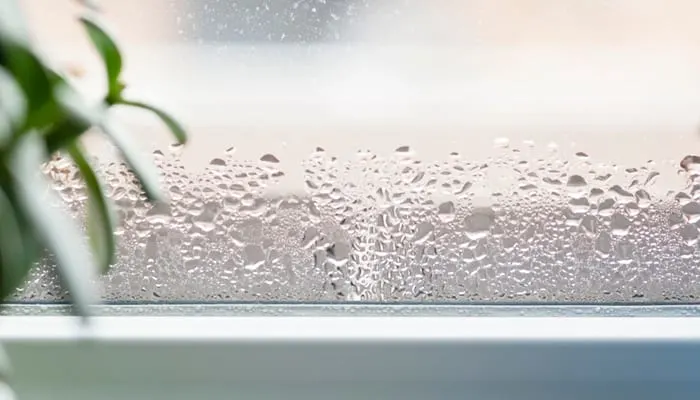
Matuska/Shutterstock
Nor is less humidity always desirable. Having too much or too little humidity can potentially cause several significant problems.
Too much humidity can:
- Waste money: High humidity inside a house during the summer causes the air conditioning system to work harder than necessary. This increases utility bills.
- Harm your health: High humidity can promote the growth of mold and germs indoors. Those can cause you to get sick.
- Damage to the house: High humidity inside can lead to condensation, especially on windows during cool weather. When water collects, it can encourage mildew to grow, paint and wallpaper to peel, and wood to swell and rot.
Too little humidity can:
- Waste money: In the winter, air that is too low in humidity can’t hold as much heat. Your heater has to work harder to keep the house at a comfortable level when the air is too dry.
- Harm your health: Too little moisture in the air can dry out your body’s skin and mucous membranes in air passages. Chapped lips, sore throats, and sinus infections can result.
- Damage your house: Excessive dryness can cause wood floors, furniture, window frames, and doors to shrink and crack.
A humidistat can help avoid these problems by adjusting the indoor humidity.
Using a Humidistat
You may adjust a typical humidistat by turning a knob on a dial marked with percentages. These percentages correspond to the level of moisture in the air.
Other humidistats may be set by pressing a button to change the numerals on a liquid crystal display. Again, the number indicates the percentage of moisture in the air.
The percentages actually refer to the relative humidity. This is the same humidity figure given in weather reports.
Relative humidity depends on both the air temperature and air pressure. Relative humidity will be higher in cool air than in warm air, even when the same amount of water vapor is present in the air.
Setting the Humidity Level
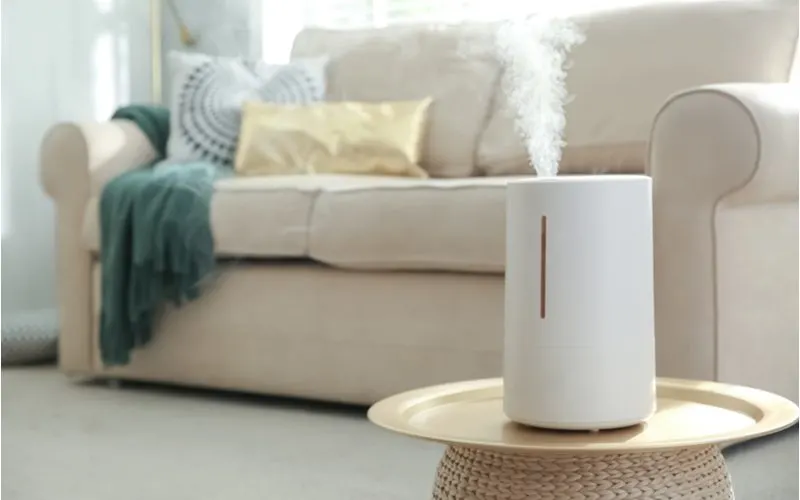
New Africa/Shutterstock
The American Society of Heating, Refrigerating, and Air-Conditioning Engineers recommends humidity levels between 25 and 60 percent. It’s particularly desirable to keep the humidity below 68 percent because more than that allows mold to flourish.
In practice, a good level of indoor humidity is usually considered to be between 45 and 60 percent. And to be even more specific, the most common recommendation is to set the humidistat for about 58 percent.
This will help to keep the humidity within the desirable range, neither too dry nor too moist. However, the ideal setting can vary depending on the weather outside.
For instance, colder weather generally calls for lower humidity settings. Many experts suggest the following winter settings:
- Outdoor temperature: -10 degrees Fahrenheit; set humidistat at 20 percent humidity.
- Outdoor temperature: 0 degrees Fahrenheit; set humidistat at 25 percent humidity.
- Outdoor temperature: 10 degrees Fahrenheit; set humidistat to 30 percent humidity.
- Outdoor temperature: 20 degrees Fahrenheit; set humidistat at 35 percent humidity.
- Outdoor temperature: 30 degrees Fahrenheit; set humidistat at 40 percent humidity.
These are general guidelines. Also, check for signs of too much or too little moisture and be ready to adjust the humidistat if necessary.
For example, if you see water or frost on the inside of windows, turn the humidistat down by 5 percentage points. Wait a few hours to see if it helps. If not, repeat the adjustment.
If you see floorboards, window frames, or other wooden structures starting to separate, the humidity may be too low. Turn the humidistat up to 5 percentage points and wait to see if that helps. If not, adjust the humidistat by another 5 percentage points.
It may also be a good idea to have a hygrometer in another area of the house. Check the hygrometer to see that humidity isn’t too high or low away from the vicinity of the humidistat sensor.
In the summer, you may want lower humidity. Some experts say 35 to 45 percent humidity is a good starting point. Again, you may need to adjust the settings based on signs of too much or too little moisture.
Humidistat Limits
The reading from a humidistat may differ from the actual humidity by 10 to 20 percent. That’s one reason to set the humidistat at no more than 58 degrees. Even if it’s off by 10 percentage points, that setting should discourage mold and mildew.
Location is another limiting factor. Humidistats are often installed next to the HVAC thermostat. However, the humidity in another room or part of the house may be very different.
For instance, the thermostat and humidistat are often in the living room. But the humidity may be much higher in a bathroom or basement.
The humidistat will only sense the humidity in the immediate area. For this reason, you may also want to have a hygrometer located in another area of the house to get a better idea of the overall humidity.
Should You Use a Humidistat?
Humidistats can give you control over the amount of moisture in the air inside your home.
When paired with a humidifier, dehumidifier, or HVAC system, they can help keep you more comfortable and avoid wasting money and possibly harming your home and health.
FAQs
What is the purpose of a humidistat?
A humidistat controls the level of humidity the heating and cooling system by adjusting the level of moisture to maintain a set level of humidity throughout your home.
What should a humidistat be set at?
58 percent. The ideal temperature and humidity settings are between 77 and 88 degrees Fahrenheit and 58 percent relative humidity. While this may sound high, your HVAC system won't actually maintain these selected temperatures.
What is the difference between a humidistat and a dehumidifier?
Humidistats sense the level of humidity in the home and instruct your whole-house humidifier to add humidity to maintain pre-set levels. On the other hand, dehumidifiers remove moisture from the air. In a nutshell, humidistats add humidity to air and dehumidifiers remove it.
Does a humidistat remove humidity?
Yes, but indirectly. If the humidistat senses your relative humidity level is too high, it'll turn off the humidifier and run the air conditioner or furnace until the humidity level is reduced.
What should the humidistat be set at in winter?
The ideal thermostat setting varies based on temperature. As a rule of thumb if the temperature is -10 F, set the humidity to 20%. If it's 0 F, set the humidity to 25%. If it's 10 F, set the humidity to 30%. If it's 20 F, set the humidity to 40%.

